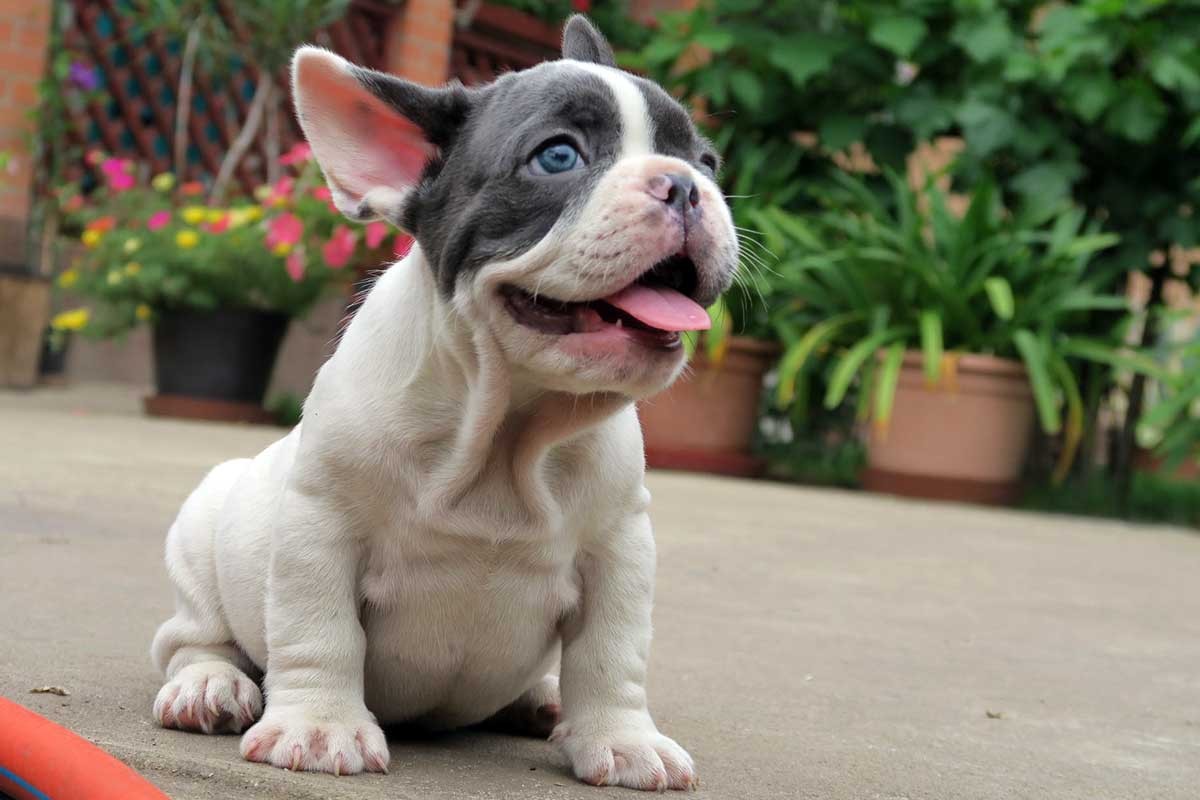
The French Bulldog breed has seen remarkable evolution in coat colors, with white and blue variations emerging as highly sought-after choices. While white represents one of the standard colors accepted by major kennel clubs, blue is considered a rare, non-standard variation resulting from a dilution gene. The combination of these colors, particularly in pied patterns, has garnered significant attention in the breeding community. As of 2025, these color variations command premium prices, with blue Frenchies often priced 2-3 times higher than standard colors due to their rarity and complex breeding requirements. This report examines the genetic foundations, breeding challenges, and market dynamics of white and blue French Bulldogs.
French Bulldog White and Blue
Distinguishing White and Blue Characteristics
White French Bulldogs have a pure porcelain white coat and typically display a darker facial mask. In contrast, blue French Bulldogs actually appear gray due to a dilution gene that affects black coats. The blue coloring ranges from light gray to nearly black, with their nose color being the definitive identifier. While white is a standard AKC-recognized color, blue is considered non-standard.
Price Comparison and Breeding Costs
Blue French bulldogs command significantly higher prices, ranging from $4,500-$10,000, due to their rarity and specialized breeding requirements. White French Bulldogs, being a standard color, are generally more affordable but still require the same intensive breeding process including artificial insemination and c-sections. The breeding costs for both colors include:
- DNA genetic testing: ~$300
- Health screening: $200-$500
- Stud fees: $1,000-$5,000
- C-section: $1,500-$4,500
- Progesterone testing: ~$120 per test (3-6 tests needed)
The price difference primarily stems from the blue gene's rarity rather than additional breeding complications. Both colors require careful breeding practices to maintain health standards and avoid genetic issues.
Blue French Bulldog Characteristics and Appearance
Physical Traits and Coat Pattern
While the previous section covered basic color differences, this section focuses on specific physical characteristics. Blue French Bulldogs display unique features beyond just their coat color, including light-colored eyes and a distinctive grayish-blue nose. Their coat can appear in several variations:
- Solid blue with uniform coloring
- Blue pied with white/cream patches on chest and legs
- Blue fawn combining blue and fawn tones
- Blue brindle showing brindle striping patterns
- Blue merle featuring mottled patches
Market Value and Pricing Factors
Building on the previous pricing overview, this section examines specific factors affecting blue Frenchie costs. The rarity and genetics behind blue coloring make these dogs particularly expensive, with several elements impacting individual pricing:
- Geographic location (West Coast breeders typically charge more)
- Coat pattern variation (merle and rare combinations cost more)
- Bloodline quality and champion lineage
- Breeding rights inclusion
- Health certifications and genetic testing
- Eye color (lighter eyes often command higher prices)
Prices can range dramatically based on these factors, with show-quality blue French Bulldogs potentially reaching $50,000 for specimens with exceptional traits and breeding rights.
French Bulldog White and Blue
Health Considerations and Care Differences
While previous sections covered appearance and costs, this section examines specific health aspects. White French Bulldogs generally have fewer genetic health concerns, while blue Frenchies can be prone to Color Dilution Alopecia (CDA) - a condition causing hair thinning or loss that typically appears between 6 months to several years of age. Blue Frenchies may also be more sensitive to temperature changes and require additional protection in cold weather due to their modified coat genetics.
Genetic Inheritance Patterns
Building on earlier color discussions, this section focuses on inheritance mechanics. Blue coloring results from a specific dilution gene pattern requiring two copies of the "d allele" (dd) gene to manifest. White coloring follows different inheritance patterns and is considered a base color. For blue puppies:
- Both parents must carry the dilute gene
- The dilution affects black pigmentation throughout the body
- Eye color and nose leather are also impacted by the dilution
- When combined with white markings (pied pattern), both parents typically need to carry pied genes
Responsible breeding practices focus on minimizing health risks while maintaining desired color traits through careful genetic testing and selective pairing.
Conclusion
White and blue French Bulldogs exhibit distinct characteristics, with white being a standard AKC color and blue being a non-standard variant resulting from a specific dilution gene. While white Frenchies display a pure porcelain coat, blue French Bulldogs showcase a unique gray coloring with specialized traits like light-colored eyes and grayish-blue noses. The research revealed significant price differences between the two colors, with blue French Bulldogs commanding $4,500-$10,000 due to their rarity, compared to more moderately priced white Frenchies.
Important health considerations emerged, particularly regarding blue French Bulldogs' susceptibility to Color Dilution Alopecia and temperature sensitivity. The genetic inheritance patterns for blue coloring require specific gene combinations from both parents, highlighting the complexity of responsible breeding practices. These findings underscore the importance of thorough health screening and genetic testing when breeding either color variant, with special attention needed for blue French Bulldogs due to their additional health risks. Prospective owners should carefully weigh these factors, including potential health issues and cost implications, when choosing between white and blue French Bulldogs.